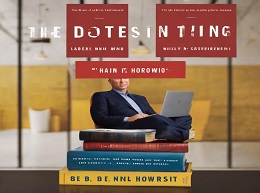Thinking, Fast and Slow

In the realm of cognitive psychology and decision-making, Daniel Kahneman's "Thinking, Fast and Slow" stands as a seminal work that illuminates the intricacies of human thought processes. Through a captivating exploration of dual systems of thinking, Kahneman offers profound insights into how our minds work and the biases that influence our decisions. Let's embark on a fascinating journey through this enlightening book, enriched with practical examples to illustrate its key concepts.
Introducing "Thinking, Fast and Slow"
The Two Systems of Thinking
Kahneman introduces the concept of two distinct systems that govern human thought: System 1 and System 2. System 1 operates automatically and intuitively, while System 2 is analytical and deliberate. Understanding the interplay between these systems is crucial for comprehending human decision-making.
Exploring Heuristics and Biases
Kahneman delves into the various cognitive biases that influence our judgments and decisions. From anchoring bias to availability heuristic, these biases often lead to irrational and suboptimal choices. By uncovering these biases, Kahneman sheds light on the limitations of human reasoning.
The Power of Intuitive Thinking: System 1
Snap Judgments and Quick Decisions
System 1 is characterized by its rapid and effortless nature. It enables us to make split-second judgments and decisions based on intuition and heuristics. While System 1 thinking is efficient, it is also prone to biases and errors.
The Influence of Priming
Kahneman explores the concept of priming, whereby exposure to certain stimuli can influence subsequent thoughts and behaviors. By understanding the mechanisms of priming, we can become more aware of how external factors shape our perceptions and decisions.
The Deliberate and Analytical Mind: System 2
Slow and Methodical Reasoning
System 2, in contrast to System 1, is characterized by its deliberate and analytical nature. It requires conscious effort and cognitive resources to engage in systematic reasoning and problem-solving. While System 2 thinking is slower, it is also more accurate and reliable.
Overcoming Biases with System 2
Kahneman emphasizes the importance of engaging System 2 to overcome the biases inherent in System 1 thinking. By applying critical thinking and logical reasoning, we can mitigate the effects of cognitive biases and make more informed decisions.
Practical Examples and Everyday Applications
The Power of Framing
Kahneman illustrates the concept of framing, whereby the presentation of information influences our perceptions and decisions. He presents examples where subtle changes in framing can dramatically alter decision outcomes, highlighting the importance of mindful framing in communication and persuasion.
The Illusion of Validity
Through real-world examples, Kahneman explores the illusion of validity, whereby individuals overestimate their ability to predict outcomes based on limited information. By recognizing this illusion, we can become more humble in our judgments and decisions, seeking out additional information to enhance our accuracy.
Decision-Making in the Real World
Investment Decisions
Kahneman's research has significant implications for investment decisions. He explores how cognitive biases, such as overconfidence and loss aversion, can lead investors to make suboptimal choices. By understanding these biases, investors can adopt a more rational and disciplined approach to investing.
Medical Decision-Making
In the realm of medicine, Kahneman discusses how cognitive biases can impact diagnostic reasoning and treatment decisions. By recognizing the influence of biases such as availability heuristic and representativeness, healthcare professionals can improve diagnostic accuracy and patient outcomes.
Applying Kahneman's Insights
Mindful Decision-Making
Kahneman's work underscores the importance of mindful decision-making, which involves being aware of the biases that influence our judgments and consciously engaging System 2 thinking to mitigate their effects.
Continuous Learning and Reflection
By continuously learning about cognitive biases and reflecting on our decision-making processes, we can become more adept at making rational and informed choices in various aspects of life.
Conclusion: Embracing the Complexity of Thought
"Thinking, Fast and Slow" by Daniel Kahneman invites readers on a thought-provoking journey through the intricacies of human cognition and decision-making. By unraveling the mysteries of System 1 and System 2 thinking, Kahneman equips us with invaluable insights that can enhance our understanding of ourselves and the world around us.
As we navigate the complexities of everyday life, let Kahneman's work serve as a guiding light—a reminder to approach our decisions with mindfulness, curiosity, and a willingness to challenge our intuitive biases.
Ready to decode the dual systems of the mind? Dive into 'Thinking, Fast and Slow' and embark on a journey of self-discovery and enlightenment.









